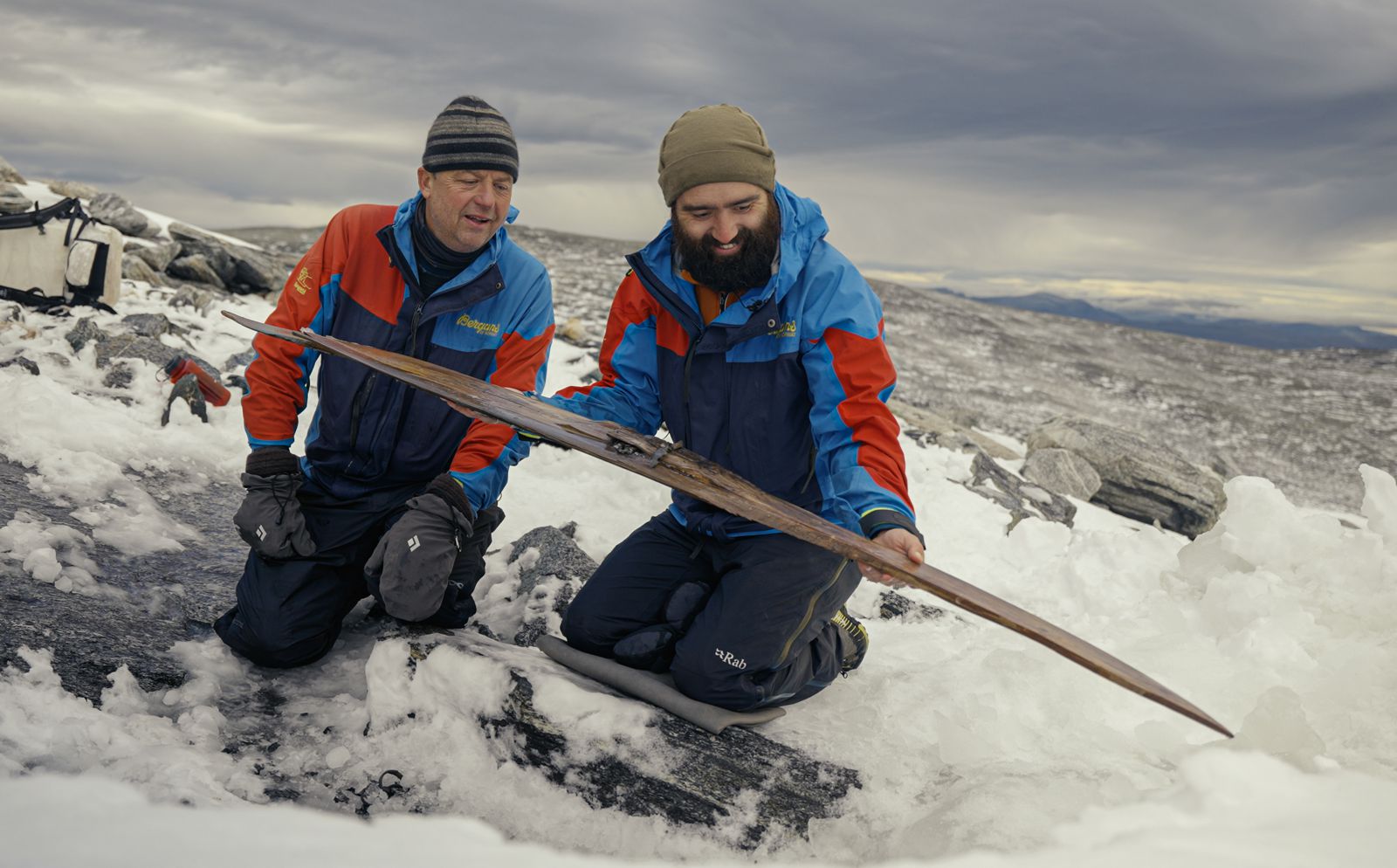A pair of prehistoric skis, more than 1,300 years old, has been reunited on a remote Norwegian mountainside after one ski was discovered this year just five meters (15 feet) from where the first was found in 2016. The discovery was made at Digervarden in September 2021, a site in Innlandet County, central Norway, by glacial archaeologists working with the Secrets of the Ice program, according to the Earth Institute at Columbia University.
The find represents what archaeologists are calling the “best-preserved” pair of ancient skis ever recovered, with intact bindings and significant detail. One ski is made from birch, the other from pine. Despite being crafted from different types of wood, radiocarbon dating suggests they were used together during the Iron Age, providing rare insights into prehistoric travel and resourcefulness in the harsh, high-altitude environment.
The Secrets of the Ice initiative is led by the Innlandet County Council and the Museum of Cultural History in Oslo. Co-director and archaeologist Lars Holger Pilø described the discovery as groundbreaking, offering unprecedented insight into how ancient people moved through mountainous terrain during winter. The preservation quality of the skis allows for accurate replication and further study of skiing techniques used more than a millennium ago.
The region’s glacial archaeology program was born out of a 2006 ice melt that revealed hundreds of artifacts. Since then, archaeologists have focused on permanent ice patches—more stable than glaciers—as likely sites for artifact recovery. These patches are identified through satellite images, aerial surveys, and tips from locals, such as hikers and reindeer herders.
As the climate warms and ice continues to retreat, more items long frozen in time are being exposed. While the rapid ice melt presents environmental challenges, it has also opened new windows into human history. According to Pilø, the artifacts shed light on how ancient societies adapted to climate stress, including a period known as the Late Antique Little Ice Age (circa 535–660 CE). During this time of severe cooling, locals increased hunting in mountain ice zones, as evidenced by the number of arrows and tools discovered.
The recent ski find is further proof that humans traversed and hunted in high-altitude environments during winter, much earlier than previously believed. Earlier ski discoveries had largely come from lower elevations, suggesting more horizontal movement across the landscape. This find shifts that understanding upward—both in geography and in the study of historical resilience.
Glacial archaeology also intersects with paleoclimatology. Researchers like Nicole Davi of the Lamont-Doherty Earth Observatory use tree-ring records to build context for past climate shifts, providing a longer-term perspective on Earth’s climate variability. These natural archives, paired with archaeological evidence, help scientists better understand how past climate events influenced human behavior, migration, and adaptation.
Still, the connection between ancient artifacts and broader climate patterns remains complex. Pilø notes that glacial archaeology is a relatively young field, and it will take time to draw clear conclusions about how such discoveries fit into the long arc of climate and human history. As glaciers continue to melt, archaeologists expect more artifacts to emerge—each one offering another piece to the puzzle of how humans once survived, adapted, and evolved in response to dramatic shifts in the environment. What the ice gives up in the years ahead may help inform how we approach similar challenges in the future.
